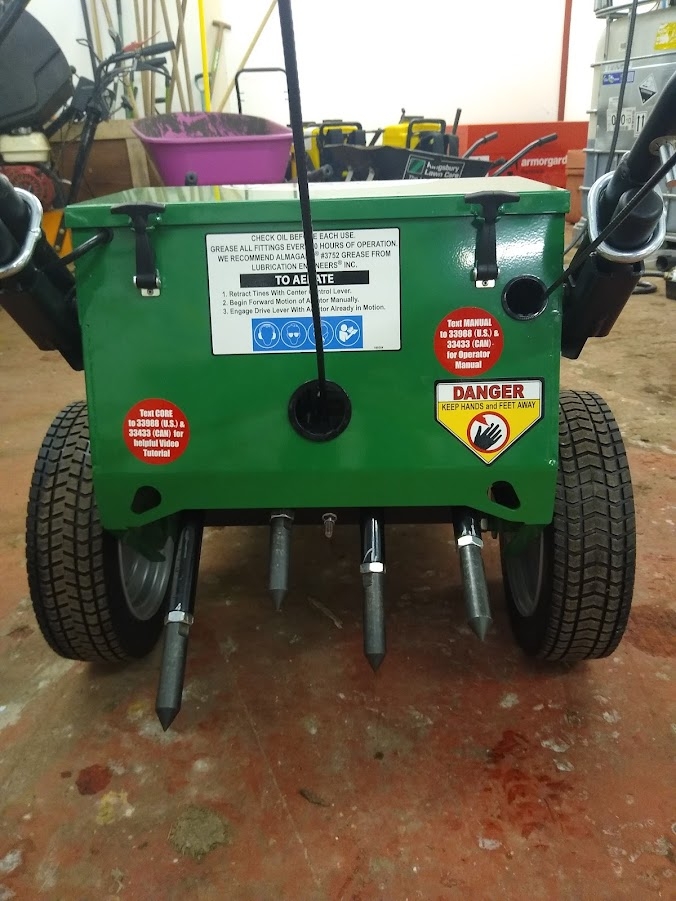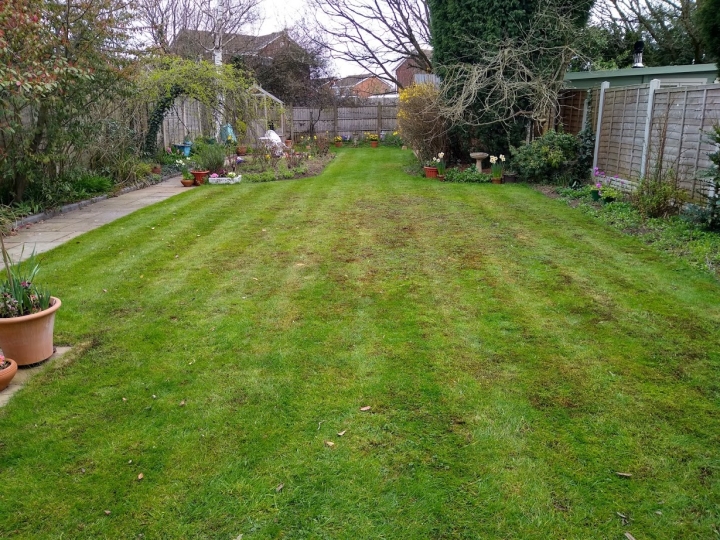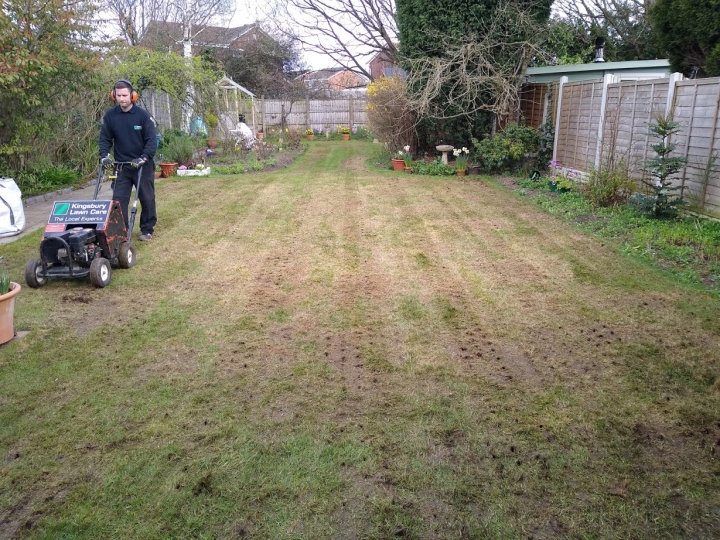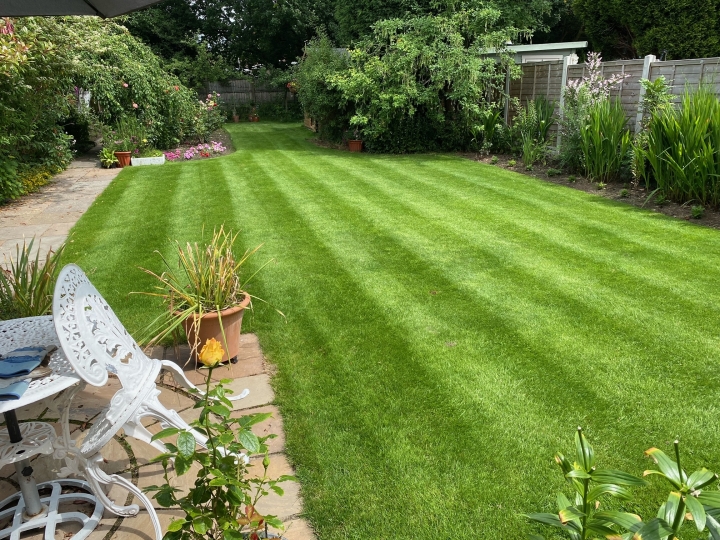When is the Ideal Time to Carry out Lawn Aeration?
Lawn aeration is a vital operation in creating and maintaining healthy lawns. If aeration is good enough on putting greens as often as each month, then including it within our lawn care programme once per year is a must! We would describe lawn aeration is the mechanical process of spiking a lawn to keep things simple. There are however many methods of aeration and could you even be doing more harm that good by aerating?
When is the Ideal Time to Carry out Lawn Aeration?
What does a Lawn Aeration Machine Achieve?
Mechanical aerators are typically ‘drum-style’ aerators or ‘elliptical action’ aerators. These machines create holes in your lawn of which size and shape dependent on the tine (spike). As the tine leaves the ground it gently heaves the soil behind it when used in good conditions, creating additional air pockets in the soil and reduced compaction.
Mechanical aerators provide a consistent tine spacing, with aeration holes being made consistently. Drum-style machines are a little more sensitive to the soil conditions in our experience. When the ground is too dry, they may not have the power or weight (or may to too fast) to achieve a good depth in a lawn of at least 3”. When the ground is soft enough for the machine to penetrate the soil well, the ground could also be too soft for the weight of the machine.
We care for lawns which are largely on clay soils, so it could be that it’s our soils that are a little more sensitive to the conditions, but we much prefer our elliptical aerators for reaching a consistent depth. The deeper we can punch holes through your lawn, the deeper that roots will grow. Until your lawn is aerated, the grass roots are missing out on untapped nutrient deeper in your soil. What a waste!
This pictured lawn is one that we provide lawn care services to in Sutton Coldfield following harsh scarification just before getting to work with a deep aeration.

How is this different to using a Garden Fork?
A garden fork is not a lawn aeration tool. As above the mechanical aerator is gently (note gently) heaving on the soil on a consistent basis. The garden fork tends to get used when lawns are too boggy to work on to made deep holes, pushing the clay soil sideways causing additional compaction. If a garden fork is used and you pull back on it lifting the ground, then grass roots get broken negatively impacting your lawn. You won’t find a garden fork on one of our vans!
What About Hollow-Tine Aeration?
Hollow-tine aeration is a form of aeration where the tine is a small tube. This goes into the ground, removing a ‘core’ of soil / thatch / grass. As this tine re-enters the lawn, the previous core is ejected from the tine, leaving these soil cores on the lawn.
Hollow-tine aeration is used where a lawn or sports surface has dense thatch. This process is physically removing these cores of thatch, allowing air to work at the base of the thatch layer.
Hollow-tine aeration is used a lot on golf greens when thatch is to be controlled in seasons where harsh scarification cannot, or if a competition is upcoming and disruption to the greens isn’t an option. Golf is a 365 days per year business whereas we can cope with our lawns not being perfectly smooth for a few days. The greens are instead hollow-tine aerated and sand top dressing is to be worked into the greens to re-provide a smooth and consistent putting surface for a fast turnaround.
This is an expensive route to take for the customers of a lawn care service unless there is good reason. We don’t need to carry this out as a workaround for scarification. For us, this would produce a great deal of clay soil cores which would need removing – clay soils will not break down as some lawn care companies have suggested previously! They must be cleared from the lawn in our area. On lighter soils they will breakdown more readily. This could work well over autumn / winter for some, just not us.
In terms of value for money for your lawn, solid tine aeration followed by a soil improver application, or a second solid-tine aeration per year would gain a better return on investment in most circumstances than hollow-tine aeration.


The difference between hollow-tines (left) on one narrow lawn aerators and solid-tines (right)
The Best Conditions for Lawn Aeration
Lawns need to be soft enough so the tines from the aerator are able to achieve the most benefit from the work. Lawns also need to be firm enough that they can take the weight of the machine without wheels causing ruts. It’s a delicate balance that we seek.
It’s worth remembering that the lawn aeration machines weight between 110 and 160kg. They are 4-5x the weight of your typical lawn mower!
When NOT to Aerate the Lawn
Lawns can be damaged through aeration in the wrong conditions. When soils are too soft and close to saturation, the weight of any traffic, more so in a clay soil will cause compaction. If lawn aeration isn’t being carried out in the correct conditions, then as much compaction might be being created than is being relieved, or worse, damage to the soil.
Lighter soils drain more freely so even in the winter months, it might be possible to aerate in good weather windows. The difficulty with lawns and clay-based soils is that due to buildings, fences and trees, as soon as our lawns become soft early in the winter, there is then very rarely an adequate opportunity to aerate.
We do not aerate any lawns in December to February, and are cautious regarding November. However, you should base decision making on soil conditions, not the calendar.
Can lawns be too dry to aerate also? Yes indeed. If the machine is going to have limited impact on hard ground, then it’s not going to be as worthwhile for your time and money. This will depend on the summer conditions again, but we wouldn’t schedule aeration work during the peak of summer.
For summer aerations, smaller diameter tines could be required to get into the soil. Chisel or fracture-tines wouldn’t be suitable and could enable the lawn to dry out quickly and become bumpy.

When to Aerate Lawns
We’ve ruled out the extreme conditions – so when do we get the best out of this vital lawn care process of aeration?
Spring and autumn are looking good for aerations. During early-autumn we’re carrying out our Lawn Renovations, which includes aeration. These calls take priority at this time of year due to the need for getting seed into the ground.
October, sneaking into November is a good option where soils have become compacted over the summer months through use or hot weather conditions. The soil may need loosening to allow the roots to breathe and to allow water and products deeper into the soil. This winter we are coming across lawns suffering badly with moss due to compacted soils.
Spring and early summer are also great months to be aerating lawns. Again this could be at the same time as scarification, or as a standalone operation. Spring aerations can help in preventing drought stress, and conditions such as localised dry patch and fairy rings. Enhancing root development before stressful conditions is going to help your lawn in coping with tougher weather, and come out of it stronger on the other side.
We will aerate lawns as late as June before machinery goes into a mid-year servicing cycle ready for those Lawn Renovations from August.



Aeration (centre) is a vital part of our Lawn Repair and Renovation service. We carry on these calls in spring and early-autumn. When combined with scarification and overseeding, the results of this work (right) when accompanied by our Lawn Care Treatment Programme speak for themselves!
Can We Help?
As a growing lawn care service, we’ve invested heavily into our lawn aeration machinery over the last two years in particular. As we’ve discussed inclusion of an annual aeration within your lawn care programme in good soil conditions is key for lawn health, and is all the more important on our largely clay-based soils.
If you're in the West Midlands and your lawn has seen better days, then get in touch to take the first step in building a partnership with us. Gain an Instant Estimate via the link below, complete our contact form in the webpage footer, or speak to us now on 01827 826123.
